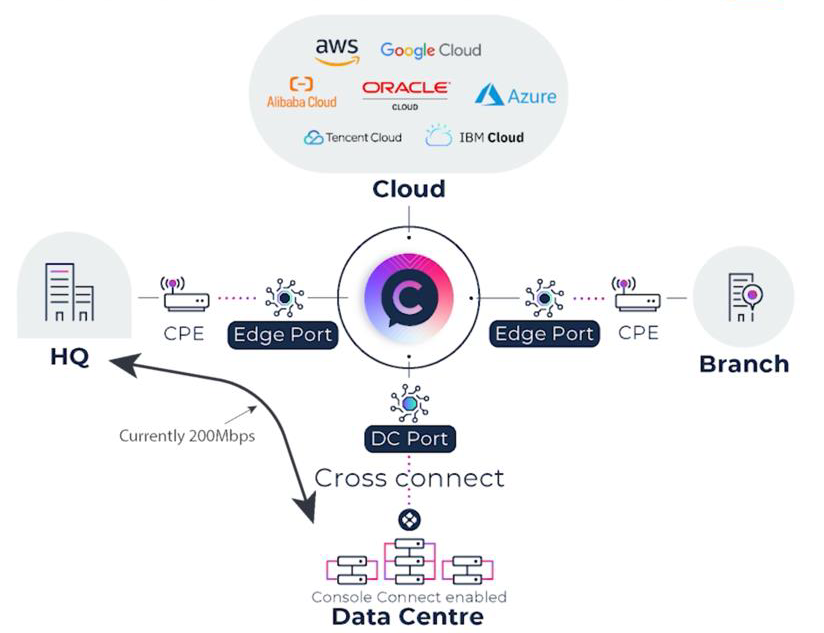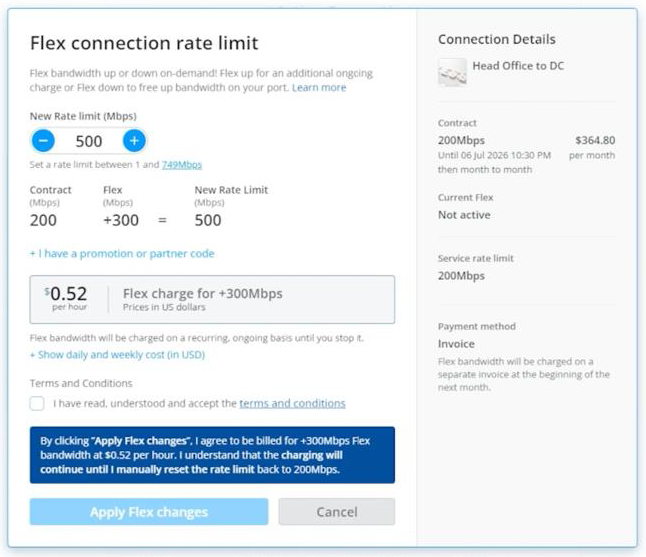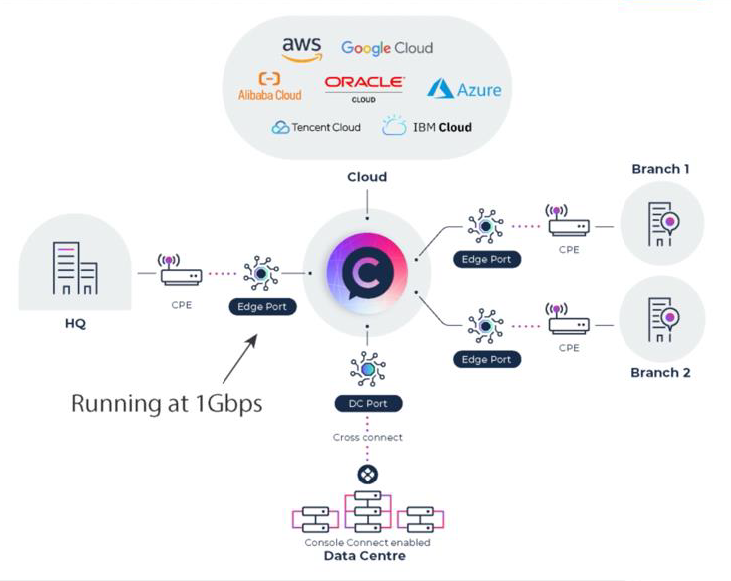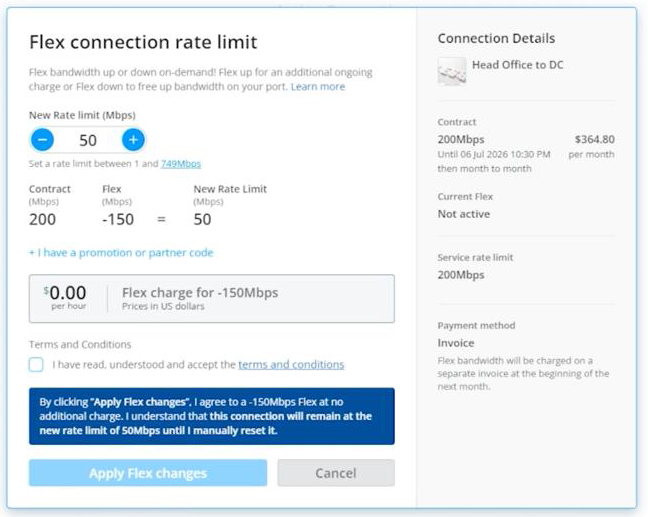One of Console Connect's most powerful features is the ability to quickly configure and immediately provision Layer 2 interconnections between Console Connect endpoints at the bandwidth capacity you need.
But what if your bandwidth needs evolve or you need to respond to a temporary surge in demand? You might encounter scenarios where you need more flexibility, such as:
- Seasonal pressures on your ecommerce site
- Emergency restoration from backup following a critical outage
- Occasional large amounts of data that need moving to a specific data centre for a short period of time, such as video or game footage that needs rendering at a dedicated server farm
Flex bandwidth for an agile infrastructure
Flex bandwidth, otherwise known as bandwidth on-demand, allows you to temporarily increase or decrease your bandwidth for a Console Connect Layer 2 interconnection between any Access Ports at your own sites, essentially connecting any mix of data centres and office sites. That includes:
- Between Edge Port and Edge Port
- Between DC Port (data centre) and DC Port
- Between Edge Port and DC Port
Flexible bandwidth is possible due to innovating through Network-as-a-Service (NaaS) technologies. A NaaS approach is a move toward making the network itself more cloud-like, shifting investment from capital expenditure to operational expenditure to facilitate an increase in agility in an environment of digital transformation, where requirements can often shift.
Before network virtualisation, the network remained almost in direct opposition to the potential of the cloud as a flexible, scalable, on-demand asset. Being able to spin up a new Infrastructure-as-a-Service (IaaS) instance in a public cloud in real time loses some of its lustre if the dedicated network connectivity to that asset takes weeks to organise.
But with flex bandwidth, the network is able to flex up and down on-demand, to better enable you to deal with volatility or unpredictability without the commitment of a fixed network circuit.
Case study: bulk data transfer
Consider a 200Mbps Layer 2 interconnect running between an Edge Port servicing a global head office in New York and a Data Centre Port in a facility in Tokyo. In this example, the Layer 2 interconnection was acquired six months prior on a three-year term to get the best rates.

Servers reside at both sites and for a two week period DevOps will be periodically transferring bulk volumes of data between servers in each location. They would like to temporarily increase the bandwidth to 500Mbps to complete their work during these times without affecting other employees using the network day-to-day.
Provided both access ports have at least 300Mbps in spare capacity, the company can use the Console Connect portal to temporarily flex up the bandwidth on the Layer 2 interconnection from 200Mbps to 500Mbps.

In terms of pricing, the company would be charged an additional pay-as-you-go rate for the additional 300Mbps during this period, until the bandwidth is flexed back down after the job is finished. They would continue to be charged the original rate for the base 200Mbps link.
Case study: media broadcast event
Now consider a 1Gbps Edge Port at an office in Sydney, carrying a pair of Layer 2 400Mbps interconnections (totalling 800Mbps) to two branch offices in Singapore.

For an internally broadcast media event initiative lasting a few days, the company wanted to set up a temporary connection from the same Edge Port in Sydney to the internet at 500Mbps. But since there is only 200Mbps in spare capacity on the 1Gbps Edge Port, there isn’t enough spare headroom. However, flex bandwidth can be used to make some.
In this case the company flexes down both existing Layer 2 interconnections to 300Mbps and 200Mbps, to create spare capacity of 500Mbps, then creates a new Internet On-Demand service for this Edge Port at 500Mbps.

The company will continue to be charged for the existing Layer 2 interconnections at the original contracted rates and will also be charged for the Internet On-Demand service at its temporary rate. After decommissioning the Internet On-Demand service the Layer 2 bandwidth interconnections will be returned to the contracted rates.
Flex bandwidth puts you in control of your bandwidth scalability and consumption. Because you are only charged for the time your flexed connections are active, you pay only for what you use, keeping your business lean.




.jpg)





.jpg)